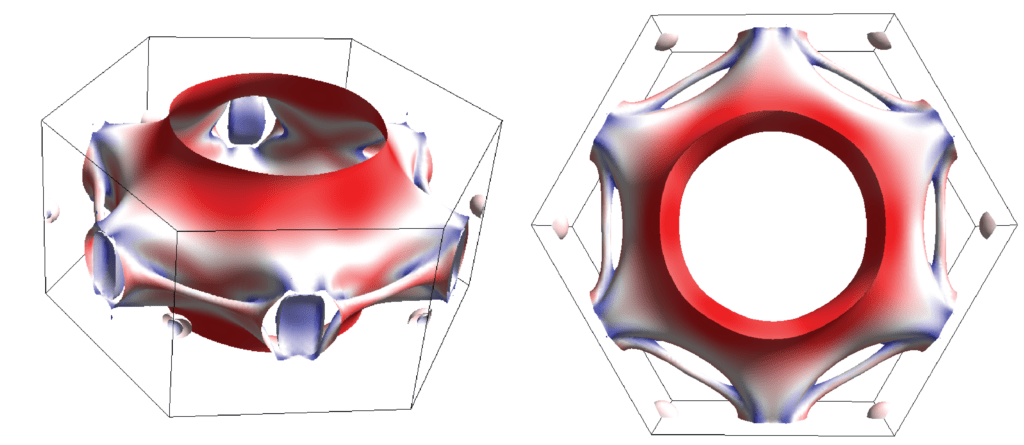In an international collaboration involving experiments and theory, the topological wrapping of electrons in matter, which refers to the curvature of the space in which they exist and move, has been measured in a new class of materials. This new discovery could lead to a deeper understanding of quantum materials, which are materials where the collective behavior of the electrons that make them up generates new properties that can only be interpreted using the laws of quantum mechanics. These materials are expected to have future applications in various technological fields, from renewable energies to biomedicine, and from electronics to quantum computers.
Using advanced experimental techniques that utilize light generated by a particle accelerator called a synchrotron, and thanks to modern modeling techniques of material behavior, it has been possible to measure the wrapping of electrons for the first time, in relation to the concept of topology. Just as a soccer ball and a donut have different topological properties related to their shapes (for example, the donut has a hole while the soccer ball does not), the behavior of electrons in materials is influenced by certain quantum properties that determine their wrapping, similar to how the trajectory of light in the universe is modified by the presence of stars, black holes, dark matter, and dark energy, which bend space and time.
Although this particular characteristic of electrons has been known for many years, no one had been able to directly measure this “topological wrapping” until now. By exploiting an effect known as circular dichroism (from the Greek “di-” meaning two and “chroma” meaning color), which means that materials absorb light differently depending on its polarization, it has been possible to obtain this measurement for the first time. In addition to using this particular experimental technique available only at a synchrotron source, the synergy with theoretical analysis has been particularly relevant. In fact, the theoretical researchers on the team employed sophisticated quantum simulations made possible only through the use of powerful supercomputers, thus guiding the experimental colleagues towards the specific region of the material’s electronic properties where it was possible to measure the effect related to circular dichroism.
Achieving this feat was the result of an international collaboration of scientists, including CNR-IOM in Trieste, the University of Bologna, Ca’ Foscari University in Venice, the University of Milan, the University of Würzburg (Germany), the University of St. Andrews (UK), Boston College, and the University of Santa Barbara (United States).
The class of materials that the team focused on is called Kagome materials, named after their close resemblance to the pattern of bamboo threads in a traditional Japanese basket. These materials are revolutionizing quantum physics due to their magnetic, topological, and superconducting properties. This new discovery promises to revolutionize the way quantum materials will be studied in the future, thereby opening the doors to new developments in quantum technologies.
The study has been published in the journal Nature Physics, D. Di Sante et al. “Flat band separation and robust spin Berry curvature in bilayer kagome metals.”
The full article is available at the following link: https://www.nature.com/articles/s41567-023-02053-z

